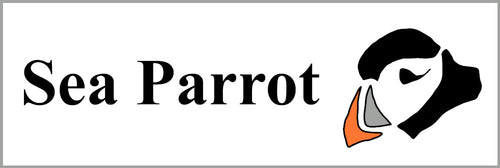I wanted to make a quilt for my 93-year old friend Peggy, who lives on Rathlin Island, using my fabrics and animal squares which depicted wildlife and plants found on the island. I wanted to make a scrappy-looking quilt and had been saving pieces of fabric for it for ages. Whilst browsing for ideas, I came across the Disappearing Nine Patch block and realised that I could get the scrappy look without all the hassle, and still use up my fairly small pieces of fabric. I loved the result and Peggy loved her quilt.

I've made another disappearing nine patch quilt using my Summer Meadow fabrics so that you can see how to incorporate my animal squares into the design.
For a quilt measuring approximately 34 x 42 inches (8 x 10 blocks), you will need 6 fat quarters. I used my Summer Meadow bundle for this one. I also used 1 x summer meadow birds strip, 1 x dragonflies, 1 x damselflies (white backgrounds) and 1 x garden butterflies (Total 24 animal squares). You can put as few or as many animal squares in as you want though. Obviously, you can make a bigger quilt with the same number of fat quarters if you use more squares and vice versa. You can find the Summer meadow fabrics here:
https://www.seaparrot.co.uk/collections/summer-meadow
and damsel and dragonflies here:
https://www.seaparrot.co.uk/collections/river
1. Cut your animal squares down into 3 1/2 inch squares, making sure that the motifs are in the centre.
2. Cut your fat quarters into 3 1/2 inch squares as below. You should be able to get about 30 squares from each fat quarter. You probably won't need all of them.


3. Put your animal squares into four piles of seven. Try to have a mix of butterflies, birds, dragonflies and damselflies in each.
4. Now it's time to make your nine patch blocks. Take one animal square from the first pile and a mix of eight of the six 'fat quarter' squares. Place the squares as below, making sure that the animal square is in the bottom right-hand corner and that all the fabrics are in the correct orientation i.e. vertical. I put a pink pyramidal orchid fabric square in the middle of every nine patch block that I made, for reasons that will become clear later. (For Peggy's quilt, I put either a pink pyramidal orchid or dark green water crowsfoot square in the middle.)

5. Sew the rows together at the sides.

6. Press the seam allowance of the top row to one side, of the second row to the other side and the bottom row as the top row. This allows the seams to be nested when sewing the rows together.

7. Sew the rows together trying to match the seams, corners of the squares, as closely as possible. As you can see, I'm not very good at that!

8. Press the seam allowances open.

9. Repeat using the other six animal squares in that pile.
10. Make seven more nine patch blocks with the second pile of animal squares but this time, putting the animal square into the bottom left-hand corner.

11. Make seven more with the animal square in the top left-hand corner and then lastly, seven with the animal square in the top right-hand corner.

12. Right, so this is when the nine patch now disappears! Take each nine patch block and cut it into four by cutting through the middle vertically and then horizontally. To do this, I cut a line through the middle of the central columns of squares and ignored the outer ones. It takes a bit of nerve because you don't want to ruin all your hard work. I forgot to take a photo of me doing this with the summer meadow fabrics but here's one from when I was making Peggy's quilt:

13. It makes arranging the blocks easier if you put the four different configurations into four piles and make a separate four piles for the animal squares.
14. Now you have to decide on your pattern. I chose this pattern because it means that no seam allowances are abutting and because it creates these nice regular diamond patterns with the pink orchid fabric. Having something regular within the quilt pattern, allows the eye to focus instead of flitting around all over the place. But you could have fun experimenting with your own design if you want to.
My pattern consists of two rows repeated down the quilt. Row 1 is alternate blocks of the big square in the right top and then in the right bottom. Row 2 is alternate blocks of the big square in the left top and then in the left bottom. See diagram below. I placed the wildlife squares randomly about the quilt, 2 or 3 per row.

15. Once you have decided on your pattern, sew all the blocks in each row together at the sides. Remember to press alternate row seam allowances in opposite directions. Then sew all the rows together. Press the seam allowances either in one direction or open.
16. Quilt and bind in the usual way. See previous tutorials.
I had some blocks left over and I think I might make another cushion cover like I did for Peggy's quilt (without the wildlife). Waste not, want not!


